Research Part 2
- How does the open-ended, chain reaction nature of The Way Things Go influence your understanding of how everyday objects can be transformed through movement and context?
I think that in The Way Things Go is an element of choosing not just everyday objects, but the ‘right’ objects for the job, whether it is an aesthetic statement or a thematic statement, or whether you will simply achieve the appropriate effect you are looking for as an artist to complete the image in your mind, aesthetically or narratively.
- In what ways can digital fabrication techniques (such as 3D scanning and 3D printing) help us reinterpret the scale and meaning of common objects and human experience in public spaces?
I think digital fabrication techniques can create a more idealized or artificial idea of reality, while also having unexpected and deranged results like what I received from scanning my 3D objects. In online spaces, 3D can allow people to interact in an ‘artificial’ world, and people can create online spaces for people to traverse and experience together, forming new ideas of what reality really is and pushing the boundaries of different realities.
In public spaces, I think reinterpreting scale and meaning gives artists an opportunity to create repetitive shapes which we can experience in multiples, or allow us to have smaller objects which can be ‘discovered’ or interpreted similar to Ting’s bunnies. There is more to view and experience than perhaps more obvious or large components of an installation when it comes to scale, while creating something that comes together to be larger or involves components which become large, bright, noisy, quiet, or theatrical and nature can be impressive, inspiring, thought provoking or intimidating.
- How might the idea that “everything can be anything” inform your approach to constructing temporary installations that invite public engagement and reinterpret their surroundings?
I think that it’s important to be open-minded as to what types of found objects you can use in process, but also to be open-minded to accommodate budgets, not limit seemingly ‘obvious’ options that are more affordable and cost-effective, but also to not rule out unconventional choices. I feel that there are more tools in your toolbox if you adopt an “Everything can be anything” mindset.
- How can the process of staging, documenting, and photographing these installations extend their life and narrative beyond their temporary existence?
I think that photos or video have the opportunity to share spaces with more people, and there are creative ways that you can go about this too like creating panoramic photos or using VR to have people interact with a moving space (like a music video.)
Research Response
Process as Narrative: Consider the importance of the process—the series of independent actions that, together, create an overarching narrative without a fixed endpoint. This idea of process-driven storytelling can inspire us to view our installations not just as static objects, but as unfolding scenarios.
RESEARCH FORMAT: A creative response | choice of one or more – writing, drawing, photos, video, sound. social media platform, etc. | digital and/or analog
Everything can be Anything
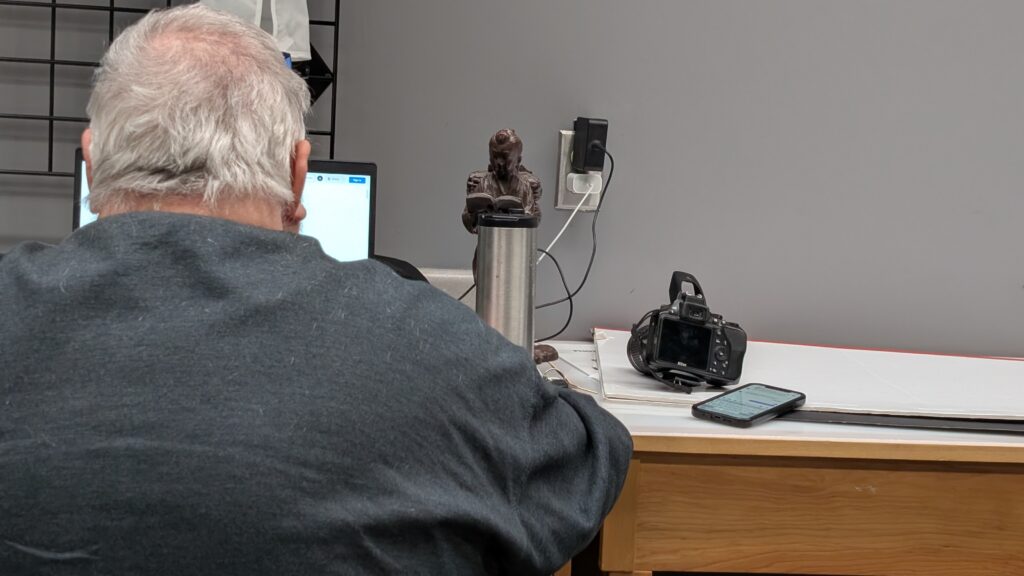
Jim’s model working beside him as he works.
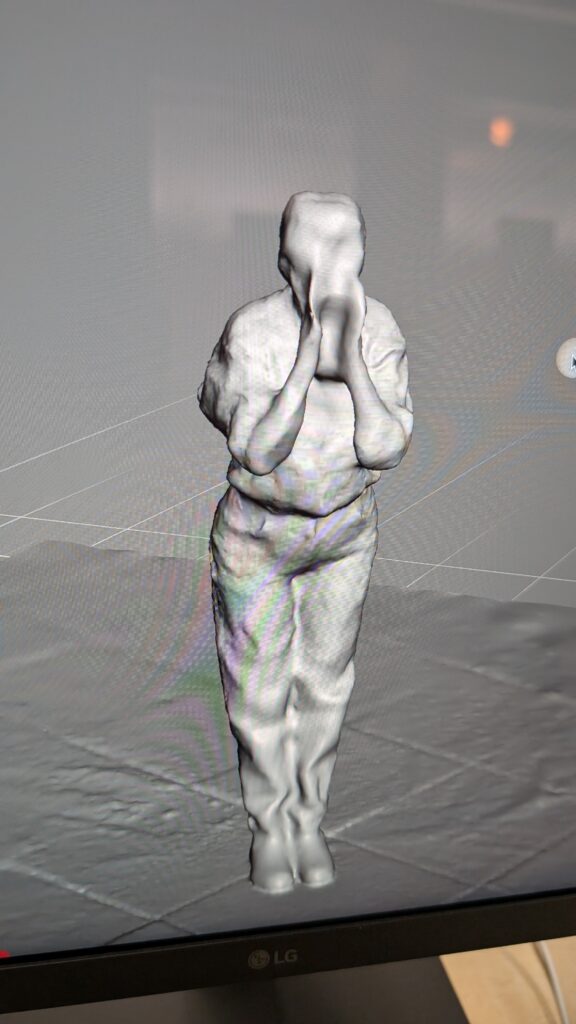
Progress development in Meshmixer.
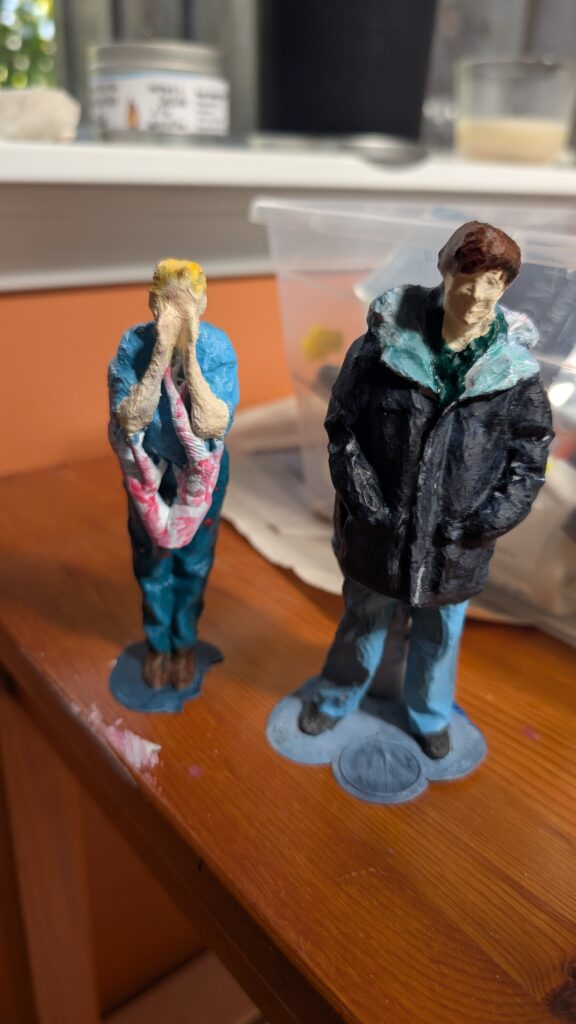
The painting stage after 3D printing!
Unit 2 – Display in Progress – Art Event
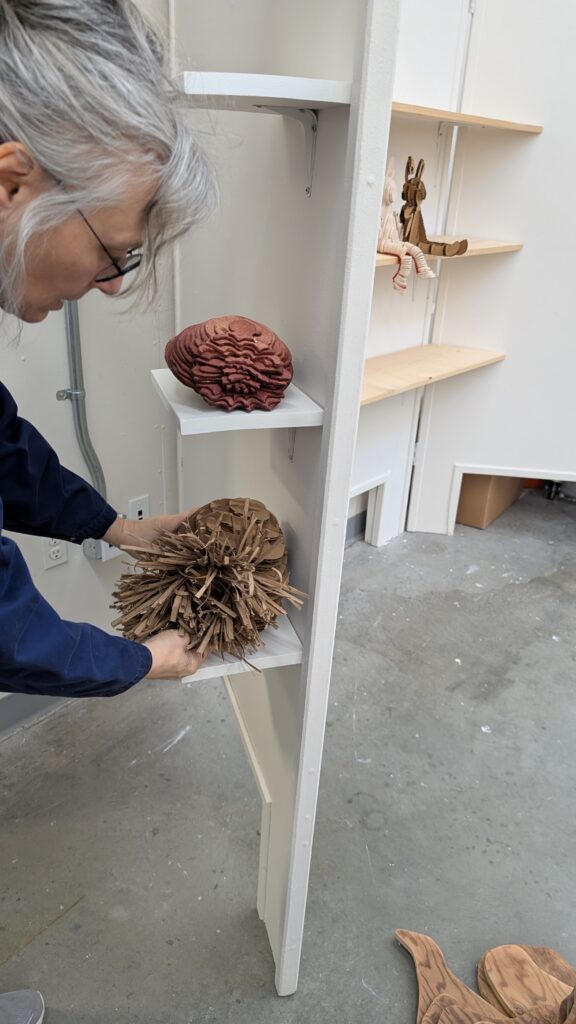
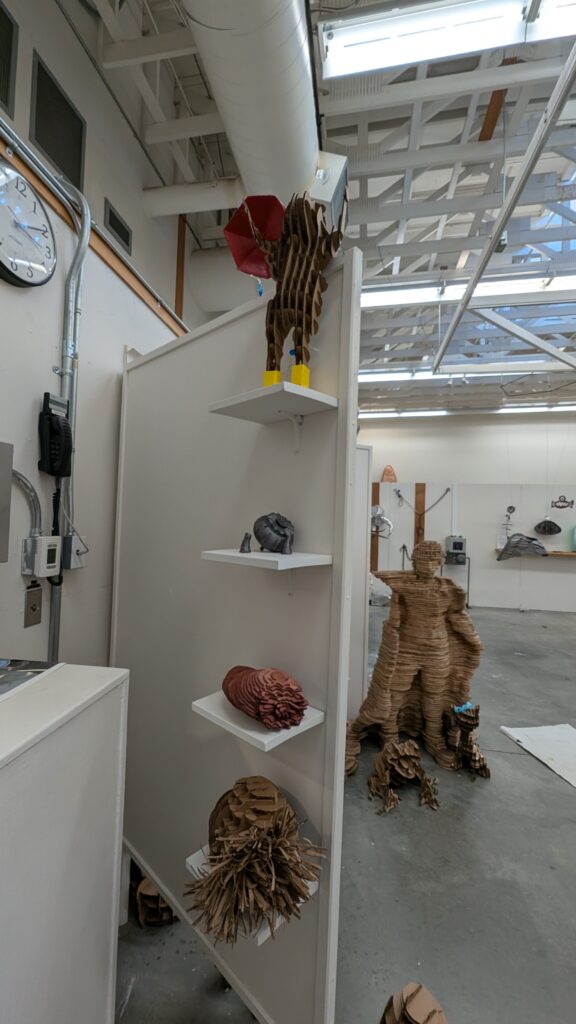
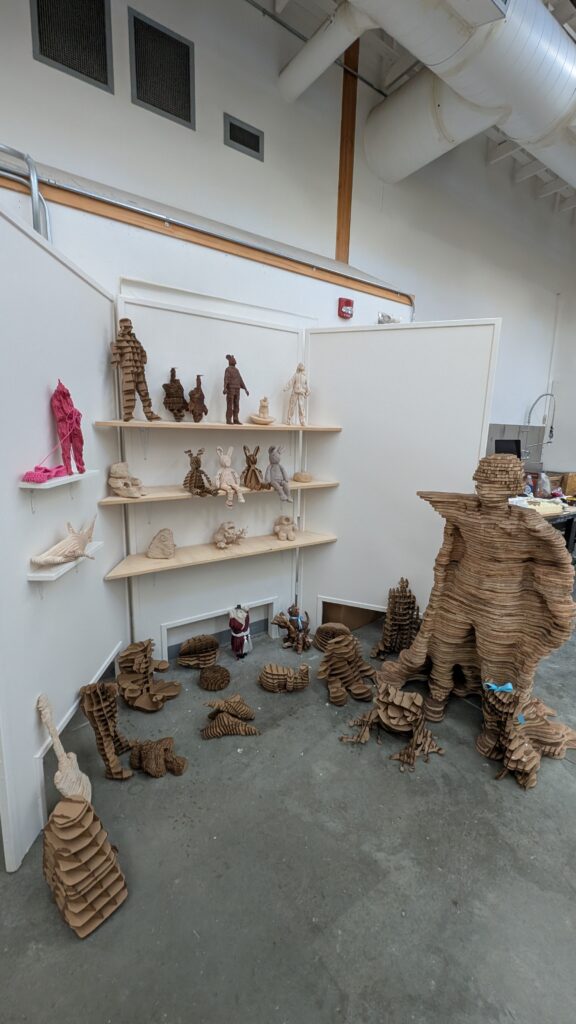
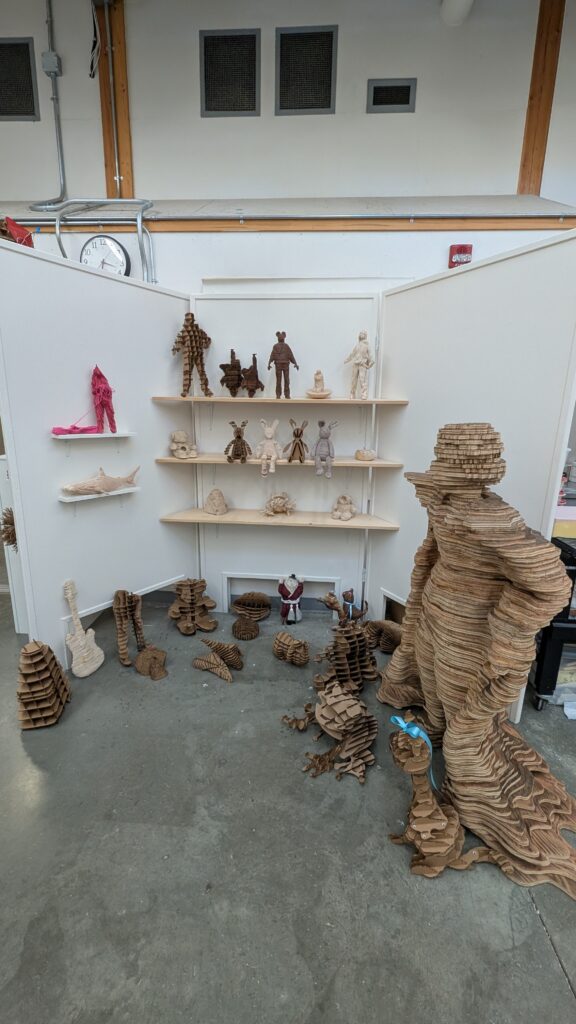
(The remainder of WordPress will be under Unit 2.)
